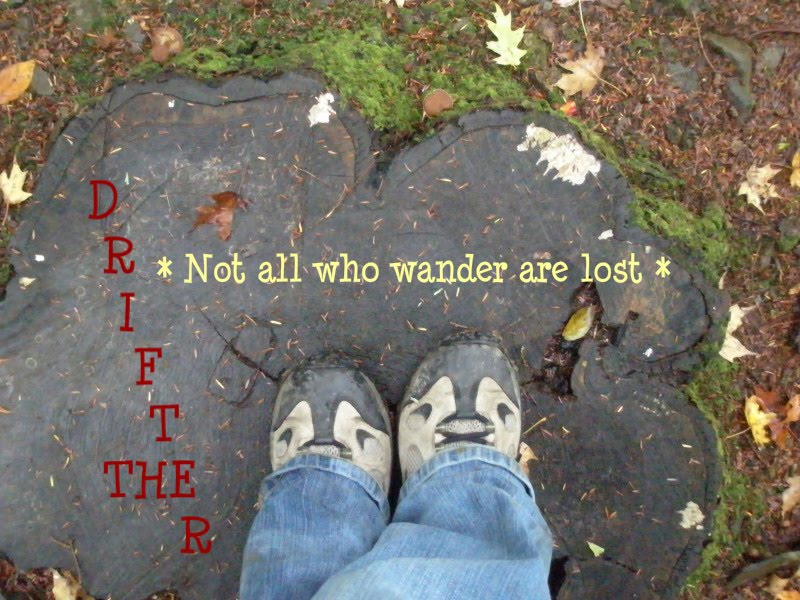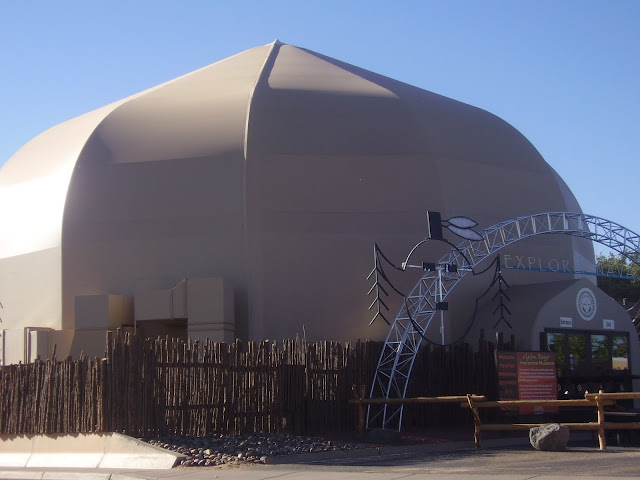As any of you may have noticed (if you were following my blog many moons ago). I have not posted for some time. Yes, it seems I dropped off the radar. I really have no excuses I suppose. I guess life just swept me off my feet. So, I wanted to throw this random post into this section of the blogging trail. I don't have the best memory, but thankfully I seemed to keep my Facebook picture albums and page better updated, so I am going to try to use that as my guide and update my blog as well. I can't guarantee that after I accomplish this goal, I won't have to turn around in another year and do the same thing. But, let's stay optimistic, shall we?
Sunday, December 30, 2007
Wednesday, December 5, 2007
Tó Naneesdizí (Tuba City)
I spent September - December working in Tuba City on a Navajo/Hopi Indian Reservation. The pleasure was all mine! What I learned from these proud people I will carry with me forever.
The name of the town honors Tuuvi, a Hopi headman from Oraibi. The Navajo name for Tuba City, Tó Naneesdizí translates as “tangled waters” which probably refers to the many springs below the surface of the ground which are the source of several reservoirs.
I lived in Flagstaff, AZ which is the first town you come to leaving the reservation, heading south/west. The reservation does not recognize the time change. Therefore, I had (at the beginning of my stay) a 3 hr difference that I had to accommodate. I also had a 77 mile trip one way. I put ALOT of miles on my car, but seeing the change in scenery was amazing, and we all know how much I love to drive! Here's a bit of a photo documentation of my daily commute.
The name of the town honors Tuuvi, a Hopi headman from Oraibi. The Navajo name for Tuba City, Tó Naneesdizí translates as “tangled waters” which probably refers to the many springs below the surface of the ground which are the source of several reservoirs.
I lived in Flagstaff, AZ which is the first town you come to leaving the reservation, heading south/west. The reservation does not recognize the time change. Therefore, I had (at the beginning of my stay) a 3 hr difference that I had to accommodate. I also had a 77 mile trip one way. I put ALOT of miles on my car, but seeing the change in scenery was amazing, and we all know how much I love to drive! Here's a bit of a photo documentation of my daily commute.
I passed by this tree twice a day and something about it made it stick out to me.
View of all the trees lining the mountains.
Another great view I obtained daily was of the San Francisco Peaks. The San Francisco Peaks are one of four sacred mountains known to certain Native American tribes. These peaks form the Navajo sacred mountain of the west, called the Dook'o'oosłííd in their language. Navajo people believe that the Holy People instructed them never to leave the land between four sacred mountains located in Colorado, New Mexico, and Arizona. To the south is Mount Taylor; to the east is Blanca Peak, and to the north is Hesperus Peak. There is a sacred object and a color representing each of the four cardinal directions. To the east is the white morning sky; its precious stone is white shell. To the south is blue and turquoise. To the west is yellow, and the corresponding stone is yellow abalone. To the north is black and jet.
San Francisco Peaks...one of the four sacred mountain groups.
Approaching a pull off for 'Genuine Indian Jewelry', a sign reads: 'Friendly Indians Here, Chief Yellow Horse Loves You'. Then, after passing the pull off, big signs state: 'Friendly Indians Behind You, Turn Back Now'.
Chief Yellowhorse LOVES you!!
A little play on words describes my next photo. A curio (referring to a curio cabinet) is a predominantly glass cabinet with a metal or wood framework used to display collections of figurines that share some common theme. Roadside vendors here used 'curios' to display their works (dolls, art, jewelry, etc.).
Vacant roadside Curio(s)
Random shots of landscape on the reservation.
Old Home near hospital.
Another item I passed daily was a sign honoring local Navajo Code Talkers. Code talkers is a term used to describe people who talk using a coded language. They transmitted their messages via military telephone or radio using codes developed built upon their native language, which was virtually impossible to translate by the enemy. Their services were used during both World War I (Choctaw), and World War II (Navajo) and was a valuable resource contributing to communication security of vital front line operations.
The code talkers received no recognition until the declassification of operations in 1968. It wasn't until 1982 that they were given a Certificate of Recognition by President Reagan, naming
August 14th 'Navajo Code Talkers Day'. Years later numerous surviving code talkers, and families of non-surviving members, received Congressional Gold Medals.
On December 13, 2007 (during my travels in this area), the Code Talker Recognition Act, was introduced to the House of Representatives. The Code Talker Recognition Act recognizes every code talker who served in the United States military with a Congressional Gold Medal for his tribe, and a silver medal duplicate to each code talker, including eight Meskwakis.
On December 13, 2007 (during my travels in this area), the Code Talker Recognition Act, was introduced to the House of Representatives. The Code Talker Recognition Act recognizes every code talker who served in the United States military with a Congressional Gold Medal for his tribe, and a silver medal duplicate to each code talker, including eight Meskwakis.
One site I was unfamiliar with was the reservations use of 'free-range' farming. Traditional American usage equates 'free-range' with 'unfenced', and with the implication that there was no herdsman keeping them together or managing them in any way. Legally, a free-range jurisdiction allowed livestock (perhaps only of a few named species) to run free, and the owner was not liable for any damage they caused. In such jurisdictions, people who wished to avoid damage by livestock had to fence them out; in others, the owners had to fence them in.
The Explore Navajo Interactive Museum opened in 2007 in the center of Tuba City, next to the historic Tuba City Trading Post.
Tuba City Health Care Corporation (where I worked).
My view on the drive home (heading out of TC).
Subscribe to:
Posts (Atom)














